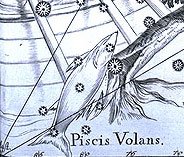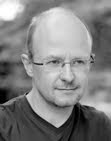Volans
 Many years ago I read Bruce Chatwin’s “The Songlines”. The Aboriginal people’s practice of imposing a symbolic topography – a complex set of stories – onto a real landscape so as to at once keep the memory alive and securely navigate over long distances I found captivating. A few years later I picked up a CD with an eponymous string quartet, written by the South African composer Kevin Volans (now resident in Ireland). Volans’ chamber works have given me a lot of listening pleasure since and recently I felt the urge to reacquaint myself thoroughly with these and other works.
Many years ago I read Bruce Chatwin’s “The Songlines”. The Aboriginal people’s practice of imposing a symbolic topography – a complex set of stories – onto a real landscape so as to at once keep the memory alive and securely navigate over long distances I found captivating. A few years later I picked up a CD with an eponymous string quartet, written by the South African composer Kevin Volans (now resident in Ireland). Volans’ chamber works have given me a lot of listening pleasure since and recently I felt the urge to reacquaint myself thoroughly with these and other works. On Volans’ website (www.kevinvolans.com) I found a short and very articulate essay about his musical practice (“Dancing in the Dark”) which offered me a lot of food for thought in relation to my own practice of photography. With the emergence of the Hölderlin-project, the key question I have been asking me is how to photograph conceptually (“about Hölderlin”) in a non-conceptual way (“without falling into the trappings of particular techniques, ideas and templates”).
For Volans, something interesting arises out of an “indescribable” relationship between the method and what he calls “musical image”. For him, composition is not about processing musical ideas in a well-defined way. The “something interesting” that takes shape in his mind or on the score paper cannot be described independently from the materials and the method. Complexity theorists would say that Volans would try to bring something to life with emergent properties. What these properties exactly are, is impossible to predict, also for the artist that is struggling with the method and the material. In that sense, “real composition begins when you do not actually understand why you are doing something, because you are attempting to reach beyond your own vocabulary.” This assessment perfectly echoes Emmett Gowin’s beautiful dictum that “we cannot know what we are doing when we are being creative.”
So Volans warns against mapping a set of values from an extra-musical model onto an aspect of the music in order to find a rationale for the music. That is exactly what the temptation is when one approaches a photographic project around an overwhelmingly rich datum such as Hölderlin. I could easily find ten different conceptual angles to approach this work. Just to give two examples: I could start from Hölderlin’s troubled psyche (“clinical schizophrenia”) and try to mirror that photographically in whatever way deemed suitable (unsharpness would probably be a good start; I know photographers who have been working in this vein). Or I could try to emulate the early Romantic pictorial aesthetics in photography (taking my cue, for instance, from Caspar David Friedrich (1774-1840), an almost exact contemporary of Hölderlin (1770-1843)).
What Volans is saying is that this kind of mapping of one medium to another amounts to confining oneself to manipulating cliché. What matters is “not a method of composition, but an attitude towards music … involving a feeling (love) for material (“know thy instrument”), an awereness that everything depends on the context (no universal rules for all situations), and a sensitivity to image.” Volans refers to traditional African music to make his point. African musicians are much less obsessed with formal characteristics (“concepts”) than their Western counterparts. For them, music is more like a natural event: “like birdsong it can be neither too long or too short, like the clouds, neither well or badly proportioned.” It is characterised by effortlessness and unpredictability: “nothing is forced, nothing is demonstrated, everything is affirmed.”
This kind of stuff will help me to wriggle out of the conceptual straightjacket I may have maneuvred myself in over the last couple of years.


0 Comments:
Post a Comment
<< Home